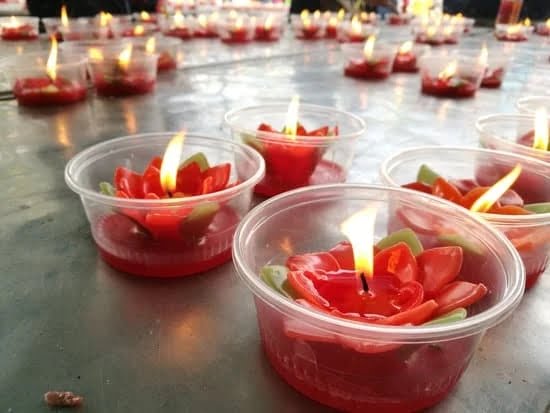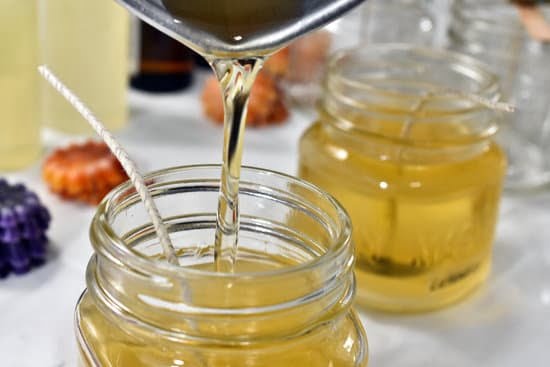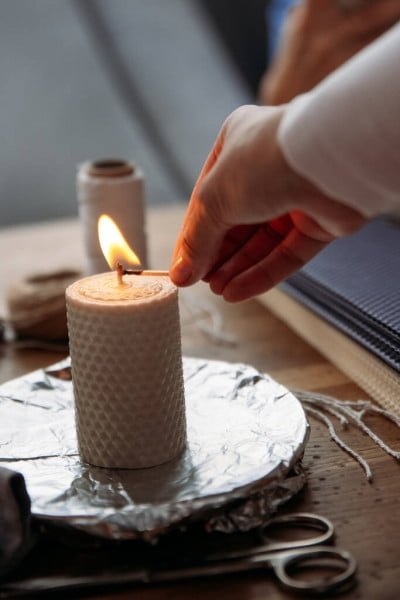Oils To Use For Candle Making
There are a variety of oils that can be used for candle making. Each type of oil has its own unique properties that can affect the overall fragrance, burning time, and appearance of the candle. Here are some of the most common oils used in candle making:
1. Soy oil: Soy oil is a vegetable oil that is commonly used in candle making. It has a mild fragrance and a low melting point, which makes it a good choice for candles that are made with a soy wax blend.
2. Coconut oil: Coconut oil is a vegetable oil that has a strong fragrance and a high melting point. This makes it a good choice for candles that are made with a beeswax blend.
3. Palm oil: Palm oil is a vegetable oil that has a mild fragrance and a medium melting point. This makes it a good choice for candles that are made with a paraffin wax blend.
4. Beeswax: Beeswax is a natural wax that has a strong fragrance and a high melting point. This makes it a good choice for candles that are made with a beeswax blend.
5. Paraffin wax: Paraffin wax is a man-made wax that has a mild fragrance and a low melting point. This makes it a good choice for candles that are made with a paraffin wax blend.
Candle Making Scented Oils
There are a variety of different scents that can be used when making candles. These scents can be used to create a certain mood or atmosphere, or simply to make the candles smell nice. In addition to using scents that are available commercially, you can also make your own scents by using essential oils.
When selecting a scent for your candles, it is important to keep in mind the type of candle you are making. Some scents are better suited for certain types of candles than others. For example, citrus scents are often used in candles that are made to be used in the bathroom, as they can help to create a refreshing atmosphere.
When using essential oils to scent your candles, it is important to keep in mind the safety of the people who will be burning the candles. Some essential oils can be potentially harmful if they are inhaled in large quantities. In addition, certain essential oils can be skin irritants. It is important to do your research on the essential oils you are considering using, and to test them out on a small scale before using them in large quantities.
If you are looking for a scent that is not available commercially, you can always make your own. One way to do this is to mix a few different essential oils together to create a unique scent. You can also experiment with adding other ingredients, such as spices or herbs, to create a unique scent.
When making candles with a custom scent, it is important to keep in mind the strength of the scent. You may need to experiment a bit to find the right combination of oils and additives to create a scent that is strong enough to be detected when the candle is burning, but not so strong that it is overpowering.
The scents that you use in your candles can have a big impact on the overall mood of the room. By experimenting with different scents, you can create candles that are perfect for any occasion.
Aromatherapy Oils For Candle Making
There are many different types of oils that can be used in candle making. Some of the most popular oils are lavender, citrus, eucalyptus, and tea tree.
Lavender oil is a great choice for candles because it has a calming scent that can help to promote relaxation. Citrus oils are also popular because they have a refreshing smell and can help to boost energy levels. Eucalyptus oil has a cooling, refreshing scent that can help to clear the mind and improve concentration. Tea tree oil has a cleansing, purifying scent that can help to fight bacteria and fungus.
When choosing oils for candle making, it is important to consider the scent that you want your candles to have. Some oils have stronger scents than others, so you will need to decide how strong you want the scent to be. You also need to consider the type of candle you are making. Some oils are better suited for certain types of candles than others.
If you are making a soy candle, you will need to use a vegetable oil such as soybean oil or canola oil. Vegetable oils are a good choice for soy candles because they are renewable and environmentally friendly. They also have a lower burning point than other oils, so they are ideal for soy candles.
If you are making a beeswax candle, you will need to use a beeswax-based oil such as carnauba wax or beeswax. Beeswax-based oils have a higher burning point than vegetable oils, so they are ideal for beeswax candles.
When choosing oils for candle making, it is important to choose oils that are safe to burn. Some oils, such as essential oils, are not safe to burn. Other oils, such as vegetable oils, are safe to burn but may produce soot.
When choosing oils for candle making, it is important to consider the scent, the type of oil, and the burning point of the oil. Oils that are safe to burn and have a strong scent are ideal for candle making.
Candle Oil Scents For Candle Making
Candle making is a fun, creative, and inexpensive hobby. One of the things that can really enhance your candles is the scent. There are many different scents to choose from, and each can create a different mood or feeling. Here is a list of some popular candle oil scents, along with the emotions they evoke.
Vanilla- Sweet, comforting, and relaxing
Lemon- Citrusy, refreshing, and uplifting
Rose- Floral, romantic, and sensual
Cedar- Woody, earthy, and grounding
Jasmine- Floral, sweet, and intoxicating
Patchouli- Musky, earthy, and sensual
Candle Making Oil To Wax Ratio
When it comes to candle making, there are a few things you need to know in order to make a successful candle. The most important factor in making a candle is the ratio of oil to wax. This ratio determines the strength and quality of the candle.
In order to make a candle, you will need:
1. wax
2. oil
3. wick
4. container
The most common type of wax used in candle making is paraffin wax. There are also a few other types of wax that can be used, such as beeswax and soy wax. The most important factor in choosing a wax is the melting point. The melting point is the temperature at which the wax will start to melt. You need to make sure that the melting point of the wax is lower than the temperature of the oil you are using.
The most common type of oil used in candle making is vegetable oil. You can also use other types of oils, such as olive oil, canola oil, and coconut oil. The most important factor in choosing an oil is the flashpoint. The flashpoint is the temperature at which the oil will start to ignite. You need to make sure that the flashpoint of the oil is higher than the melting point of the wax.
In order to determine the ratio of oil to wax, you first need to determine the weight of the wax. To do this, you will need to weigh the container, the wick, and the wax. Once you have the weight of the wax, you can determine the ratio of oil to wax.
The general rule of thumb is to use one ounce of oil for every pound of wax. However, you may need to adjust this ratio depending on the type of wax and the type of oil you are using. If you are using a harder wax, such as beeswax, you will need to use less oil. If you are using a softer wax, such as paraffin wax, you will need to use more oil.
The ratio of oil to wax also depends on the type of candle you are making. If you are making a votive candle, you will need to use more oil than wax. If you are making a taper candle, you will need to use less oil than wax.
The most important factor in determining the ratio of oil to wax is the type of candle you are making. You need to make sure that the melting point of the wax is lower than the flashpoint of the oil. You also need to make sure that the ratio of oil to wax is appropriate for the type of candle you are making.

Welcome to my candle making blog! In this blog, I will be sharing my tips and tricks for making candles. I will also be sharing some of my favorite recipes.





